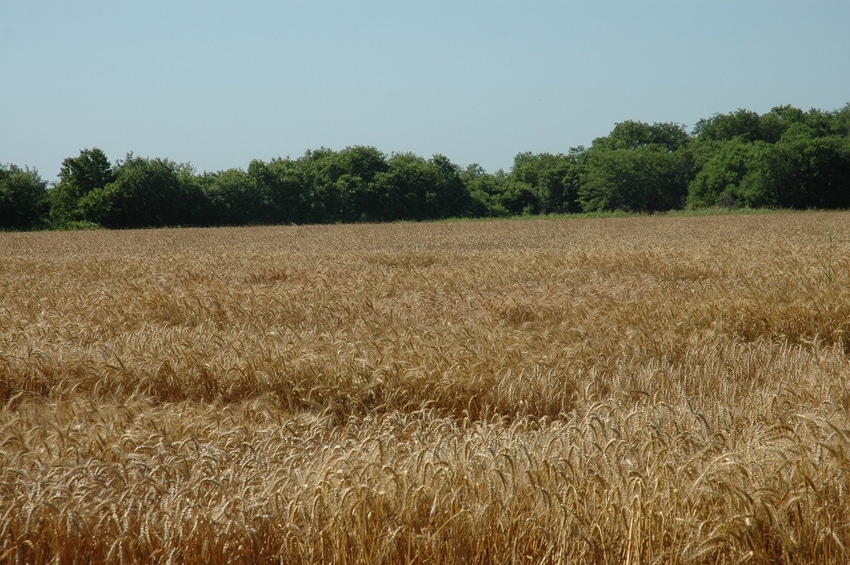September 7, 2017

The odds that the June 2018 Oklahoma and Texas average wheat price will be $5 or higher are about 30 percent.
At this writing, the market is offering around $4.00 for 2018 harvest delivery. The harvest delivery price is the KC July ’18 wheat contract price minus an 85 cent basis. The basis varies from elevator to elevator.
Three events will determine whether 2018 wheat harvest prices will be above $5 or below $3.50. These events include wheat stocks, world wheat production expectations, and the quality of the U.S. hard red winter wheat crop.
Two measurements of wheat stocks are actual stocks (ending/beginning stocks) and the stocks-to-use ratio. Ending stocks is a measure of how much wheat is in storage at the end of the marketing year (May 31). The stocks-to-use ratio is the wheat stocks in storage divided by annual wheat use (consumption) presented as a percentage. The stocks-to-use ratio is a better indicator of the price impact of ending stocks than just how many bushels are in storage.
The U.S. 2017/18 ending stocks-to-use ratio is projected to be 43.6 percent, compared to 53.4 percent in 2016/17, and a six-year average of 39 percent. The projected U.S. 2017/18 stocks-to-use ratio should be expected to indicate higher wheat prices. The fact is, world wheat stocks trump U.S. stocks.
AT RECORD LEVEL
Even with lower U.S. production, projected lower stocks, and a projected lower stocks-to-use ratio, the 2017/18 world wheat stocks-to-use ratio is projected to be a record 36 percent (Table 1).
The six-year average (2011 through 2016) is 30 percent, and the 2016/17 world wheat stocks-to-use ratio was 35 percent. Record world stocks imply that less production will be needed during the 2018/19 wheat marketing year to meet world demand.
When the world’s stocks-to-use ratio was in the 26 percent to 28 percent range (2011, 2012, 2013), U.S. wheat prices were around $7. As the stocks-to-use ratio increased to 31 percent, prices declined to near $6, and, at 34 percent, the price was below $5.
The relationship between the world stocks-to-use ratio and the U.S. average annual price indicates that for U.S. wheat prices to increase to above $5, the world stocks-to-use ratio needs to decline to about 32 percent.
If 2018/19 world wheat consumption remains near 27 billion bushels and world ending (beginning) stocks are 9.6 billion bushels, 2018/19 marketing year production would have to decline to about 26 billion bushels for prices to increase to the $5 level.
AWASH IN WHEAT
With increased production in Russia, the Ukraine, and Argentina, getting world production down to 26 billion bushels may be difficult.
Even if world production is 26 billion bushels and the average U.S. wheat price is $5.50, Oklahoma and Texas wheat prices may be $5 or less (Table 1). For the years with excess supplies and a relatively high percentage of poor milling quality wheat (think 2010, 2016, and projected in 2017), the Oklahoma and Texas price averaged 50 cents below the U.S. price.
The fact is that the world is awash in wheat and, if lower production occurs, it will not happen until August or September 2018 — which is too late to help with June 2018 prices. Thus the odds are against $5 wheat next June.
Table 1: World wheat production, consumption, ending stocks-to use, and prices. |
|
Crop Year |
|
2011 |
2012 |
2013 |
2014 |
2015 |
2016 |
2017 |
2018 |
11-17 Average |
About the Author(s)
You May Also Like






